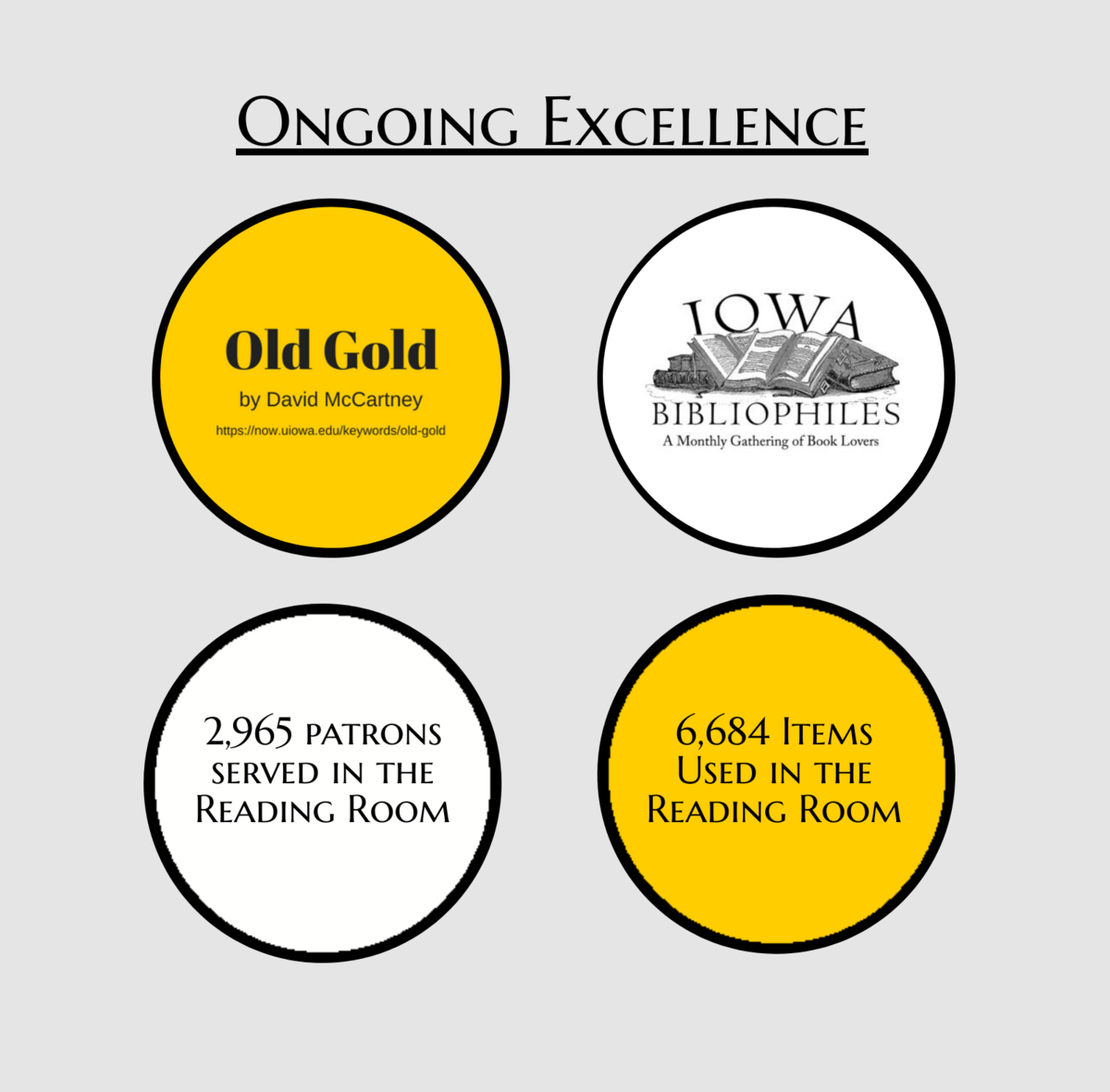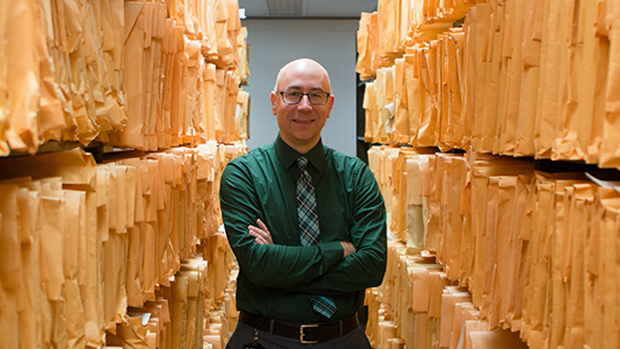Left: Manuscripts class with fifth grade students. Right: Center for the Book class. Photos: Final tote bag pile, Colleen Theisen and Rebecca Romney speaking at Prairie Lights, Janet Weaver speaking about Mujeres Latinas at Hancher, the Instagram meetup, and a crowd scene from the final plenary session. NBC Nightly News filmed a segment about theContinue reading “2017 Year in Review for Special Collections”
Tag Archives: greg prickman
Prickman honored with Arthur Benton University Librarian’s Award for Excellence
[Reposting from UI Libraries] Greg Prickman, head of Special Collections at the University of Iowa Libraries, was honored March 31 with the 2015 Arthur Benton University Librarian’s Award for Excellence. The Arthur Benton University Librarian’s Award for Excellence recognizes a member of the UI Libraries’ professional staff who has demonstrated outstanding commitment and leadership inContinue reading “Prickman honored with Arthur Benton University Librarian’s Award for Excellence”
News and Updates from Special Collections 11/13/2015
Recently Cataloged Two carts of 1930s-2000s science fiction books from the James L. “Rusty” Hevelin Science Fiction Collection have recently returned from the Cataloging-Metadata Department. Among these are hardcover and paperback books as well as magazines and periodicals. Included are works by Isaac Asimov, H.P. Lovecraft, Frank Herbert and more. Use the keyword “Hevelin” inContinue reading “News and Updates from Special Collections 11/13/2015”
News From Special Collections 10/16/2015
Librarians in the Wild: ICON Science Fiction Convention October 16-18th, 2015 The ICON Science Fiction convention began 40 years ago, born from a passionate group of fans that met in a science fiction class taught here at the University of Iowa by the Hugo and Nebula award winning author Joe Haldeman, and the same group who formed a U.I.Continue reading “News From Special Collections 10/16/2015”
Lucy Hartmann
After working in Special Collections for a while, we meet many people who leave a lasting impression on us—collectors, donors of papers, students, and researchers, among others, who devote countless hours to their work in these collections. In the midst of comings and goings, some individuals stand out, and one of them deserves special recognition.Continue reading “Lucy Hartmann”
Stewart Stern, 1922-2015
Yesterday I walked into a meeting to discuss an upcoming exhibition we are putting together on World War II. On the book truck I pushed in front of me were several boxes from the papers of Stewart Stern. Stern was a World War II veteran, a survivor of the Battle of the Bulge, who wentContinue reading “Stewart Stern, 1922-2015”
“New” Incunables Arrive in Special Collections
If you have been following any of our social media feeds over the past few days, you may have noticed photos popping up of newly-acquired incunables. So, what’s going on here? First, some background: Incunables are books printed in Europe during the fifteenth century, between 1450 and 1501, examples of the earliest printed books. TheContinue reading ““New” Incunables Arrive in Special Collections”
In Memory of George Ludwig
The U.S. launched its first satellite, Explorer I, on this day 55 years ago, on January 31, 1958. Under the direction of Prof. James A. Van Allen of the University of Iowa’s Department of Physics, the satellite carried a payload of data-gathering equipment which eventually revealed the presence of radiation belts encircling the earth. OurContinue reading “In Memory of George Ludwig”


